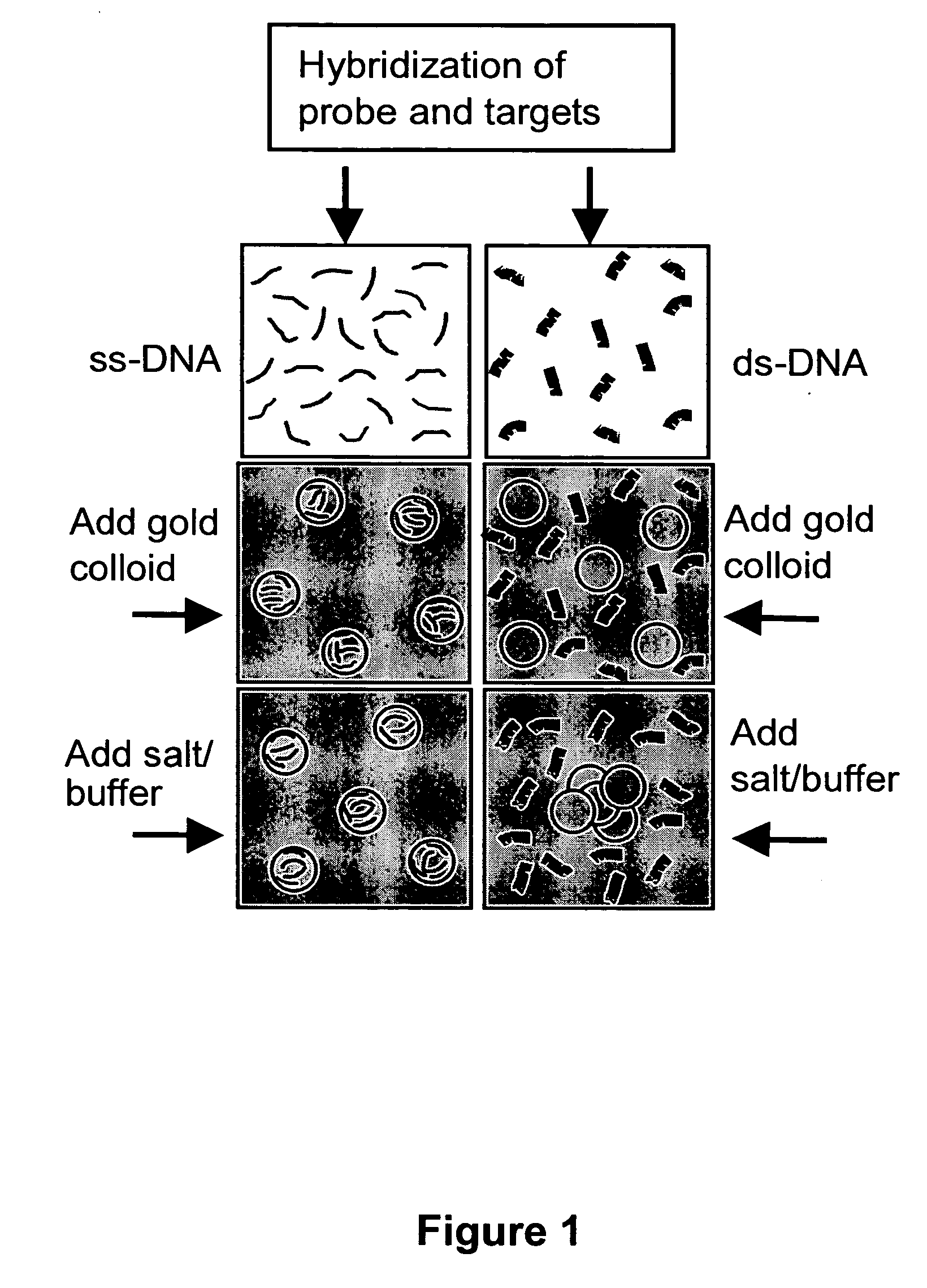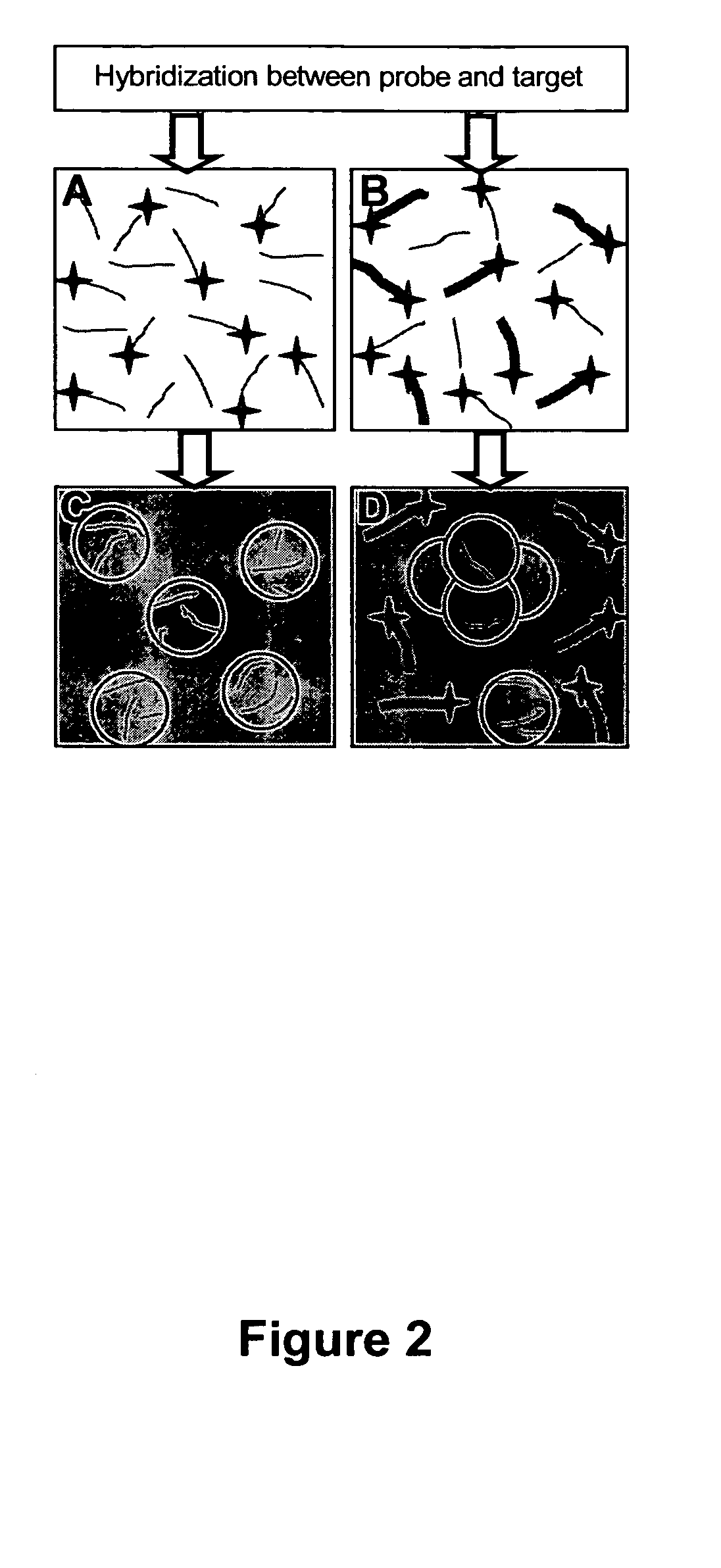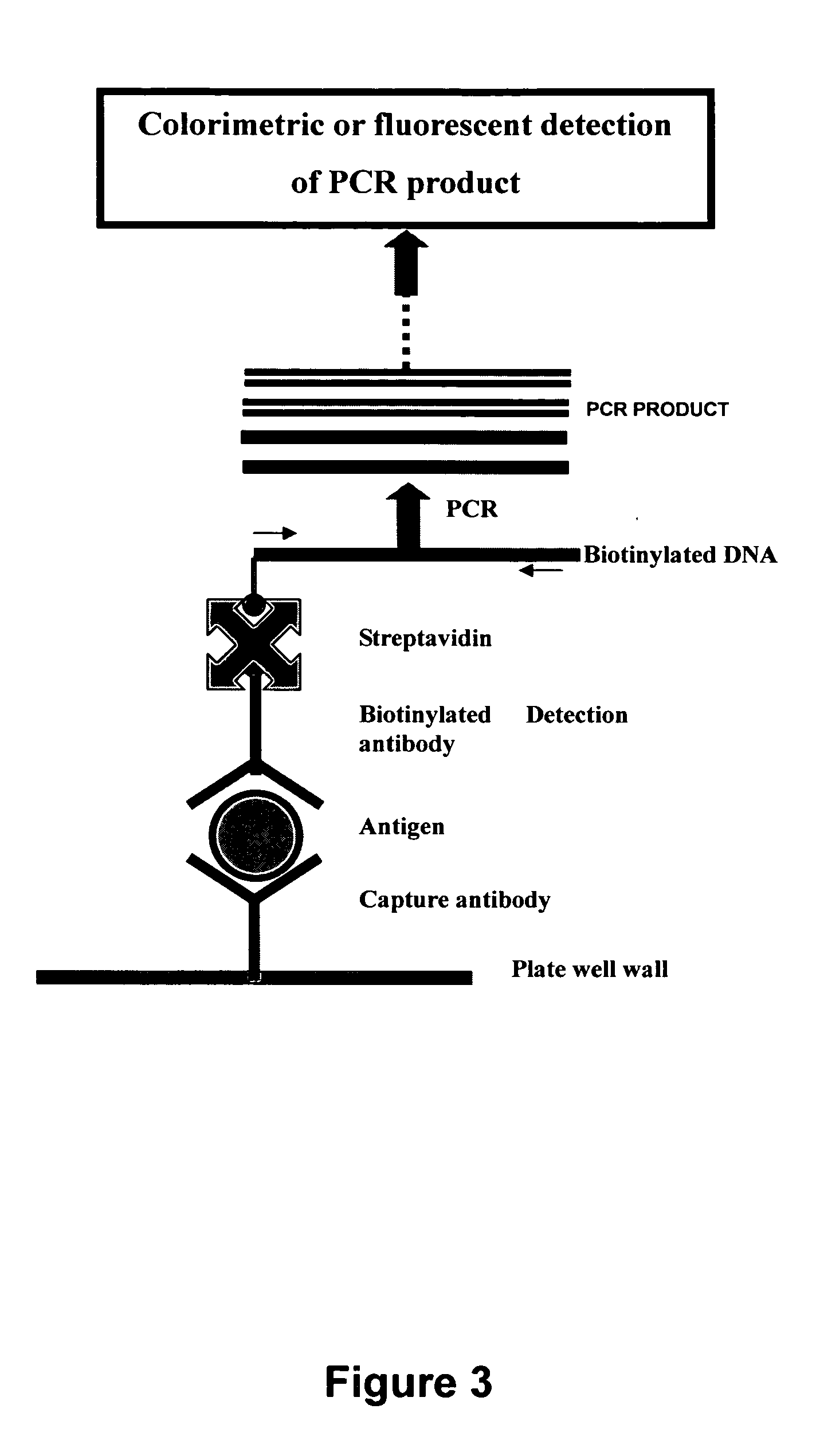Methods for separating short single-stranded nucleic acid from long single-and double-stranded nucleic acid, and associated biomolecular assays
a nucleic acid and short-single-stranded technology, applied in the direction of microorganism testing/measurement, biochemistry apparatus and processes, etc., can solve the problems of slow response, complex surface attachment chemistry, slow hybridization to sterically restricted probes on surfaces, etc., to slow down the hybridization process and detect snps in genomic dna. the effect of particularity
- Summary
- Abstract
- Description
- Claims
- Application Information
AI Technical Summary
Benefits of technology
Problems solved by technology
Method used
Image
Examples
example 1
Gold Nanoparticles Preferentially Adsorb Single-Stranded Nucleic Acid Rather Than Double-Stranded Nucleic Acid
[0112] Direct evidence for the preferential interaction between dye-tagged ss-DNA and gold nanoparticles is illustrated in FIGS. 4A-B. The fact that dye-tagged ss-DNA adsorbs on the gold while ds-DNA does not can be seen through the effects of adding colloidal gold to solutions containing either dye-tagged ss-DNA or dye-tagged ds-DNA. In the case of dye tagged ss-DNA, quenching of the dye photoluminescence and enhancement of resonant Raman scattering from the dye were observed. Both of these require intimate contact between the dye and the gold since they are effects of electronic interactions with the gold plasmons.
[0113]FIG. 5A presents spectra of the colloid prior to and after addition of ss-DNA or ds-DNA and salt / buffer solution. Ordinarily, exposure to salt screens the repulsive interactions and causes colloid aggregation (Hunter, Foundations of Colloid Science, Oxfor...
example 2
Differential Fluorescence Quenching of Dye-Tagged Single-Stranded DNA and Double-Stranded DNA
[0128] DNA oligonucleotides labeled with rhodamine red fluorescent dye covalently attached at the 5′ end were used as probes. Several microliters of μM solutions of probe were exposed to the target sequences for trial hybridization in 10 mM phosphate buffer with 0.3 M NaCl. The hybridization solutions were added to colloidal gold suspensions and additional phosphate buffer saline solution was added to assist in stabilizing ds-DNA.
[0129]FIG. 7A illustrates the result of a measurement comparing the photoluminescence from trial solutions with complementary and non-complementary targets. Fluorescence contrast larger than 100:1 was observed because unhybridized probes efficiently adsorb on the gold nanoparticles so that their fluorescence is quenched. The adsorption mechanism is entirely electrostatic, as discussed in Example 1 above. The adsorption and concomitant fluorescence quenching are ir...
example 3
Application to Long Target Sequences
[0132] For genomic analysis, it is desirable to detect specific sequences on much longer DNA targets than synthesized oligonucleotides. These could be derived directly from clinical samples or from samples that have been amplified using PCR. FIG. 8A is a proof of principle for detecting matches to parts of long targets. In spite of the fact that large portions of the target remain single stranded and will presumably have the electrostatic properties of ss-DNA, the assay can be used to determine whether these long targets contain sequences complementary to short dye-tagged probes. The reason adsorption and quenching are not observed in this case is that long ss-DNA sequences adsorb on the gold nanoparticles at a much slower rate, as noted in Example 7 herein. Thus, the technique is most practical when short dye-tagged probes (<25 mers) are used.
PUM
| Property | Measurement | Unit |
|---|---|---|
| temperature | aaaaa | aaaaa |
| temperature | aaaaa | aaaaa |
| size | aaaaa | aaaaa |
Abstract
Description
Claims
Application Information
 Login to View More
Login to View More - R&D
- Intellectual Property
- Life Sciences
- Materials
- Tech Scout
- Unparalleled Data Quality
- Higher Quality Content
- 60% Fewer Hallucinations
Browse by: Latest US Patents, China's latest patents, Technical Efficacy Thesaurus, Application Domain, Technology Topic, Popular Technical Reports.
© 2025 PatSnap. All rights reserved.Legal|Privacy policy|Modern Slavery Act Transparency Statement|Sitemap|About US| Contact US: help@patsnap.com



